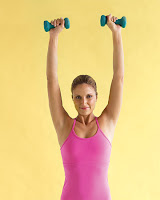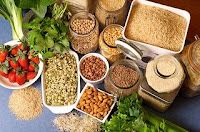The sesame seed, Sesamum indicum, from the Pedaliaceae family, is well known throughout many cultures and has been valued as food and medicine alike. As sesame is a rare seed that contains high quantities of methionine and tryptophan as well as other amino acids. It is a perfect match for grains and legumes to create necessary essential amino acid balance in vegetarian diets. It is interesting to see how this little seed is eaten in deliciously complementary combinations across many cultures:
- In the Middle East, it is often used in a mixture of spices, herbs and nuts called za’atar or dukkah and eaten with bread and olive oil, or it is made into tahini and eaten with falafels and hummus.
- In Japan, the black sesame seed is ground and mixed with salt and used as a nutritious seasoning for rice or noodles called gomashio.
- In Myanmar (Burma), it is added to salads or served at the end of the meal in a unique pickled tea salad.
- The Chinese usually toast the seeds before grinding them into a paste, which is added to stir fried vegetables. Alternatively they press the flavorful oil from the toasted seeds and drizzle it over noodles or vegetables before serving.
- In India, among other countries it is made into halvah and eaten as a desert, they also use cold pressed untoasted sesame oil for cooking.
In Japan, the traditional art of creating the silkiest flavored oil is continued to this day. Human hair is used to filter the oil, creating an incredibly soft texture. Most sesame oil now available is extracted with high heat, bleached and deodorized. This process oxidizes the polyunsaturated fatty acids, creating rancid oils which are harmful, completely different from the cold pressed, beneficial sesame oils of our forefathers.

The black sesame seed in particular is renowned for its medicinal properties and is used in Unani, Ayervedic, Tibetan and Chinese medicine. It is traditionally used for problems with the liver and kidneys, dizziness, blurred vision, ringing in the ears, headaches and to relieve PMS. An interesting use for it is as a mouthwash for tooth and gum disease in which cold pressed sesame oil is swished around in the mouth and then spat out once a day. It is used as a sedative and will relieve anxiety and insomnia if a few drops are placed in the nostrils. Sesame fortifies the constitution when recuperating from long illness. In Ayervedic medicine the oil is often rubbed into the skin in a practice called abhyanga, which is done to improve energy flow and free the body of impurities. It has also been used for colic, rheumatism, burns, leprosy, piles and colds.
Some people swear the soup of ground black sesame seeds, rice and sugar is a perfect remedy for thin, limp and dull hair, if eaten two times a day. It is also commonly used in cosmetics, soaps and lubricants. The flowers of the sesame are used to make cologne.
Sesame seeds consist of fifty percent or more oil, which contains high levels of vitamin E, in particular alpha and gamma tocopherol. Gamma tocopherol has recently been found highly beneficial for combating nitrogen free radicals, chronic inflammation, cancer, heart disease, high blood pressure and degenerative brain diseases like Alzheimer’s.
Sesame seeds have about three times the calcium content of milk.
They also have magnesium, vitamin A, some B vitamins, sesamin lignan (an antioxidant), zinc, phosphorus, copper, iron and potassium. Modern studies have found the oil to have wide medical and pharmaceutical application, it is a mild laxative, has anti-cancer, anti-bacterial, anti-inflammatory and many other beneficial qualities. Cold pressed sesame oil has very high antioxidant properties making it a stable cooking oil. If added to other oils it helps prevent them from oxidizing as well. Although sesame seeds have not been a major problem for people with food intolerances its extensive use as a major ingredient in highly processed margarine may have created intolerance in some people.These seeds have a nutty flavor that goes well with both sweet and savory food, making it easy to add to the diet:
- They can be conveniently used in salads, by toasting them in a dry pan and then grinding them (they are digested better ground).
- Ground sesame seeds can also be added to oatmeal porridge or yogurt for breakfast.
- A simple mix of the Japanese gomasio can be made with a ratio of five to one, black sesame seeds to sea salt, ground and used as a seasoning for pasta, vegetables or rice.
- Different flavors of dukkah or za’atar make easy, healthy and tasty snacks to offer guests and family alike.
- Cold pressed untoasted sesame oil is available at most health food stores and can be added to other oils to prevent oxidation when cooking.
- Toasted sesame oil imparts a lovely flavor to salads or drizzled over sauteed vegetables or pasta.
- Tahini dressing or hummus dips are great for vegetable sticks or chips.
- They can be added whole or ground to breads, muffins and cakes.
- Delicious Shan tea can be made by toasting sesame seeds and adding them to black Chinese tea.









































